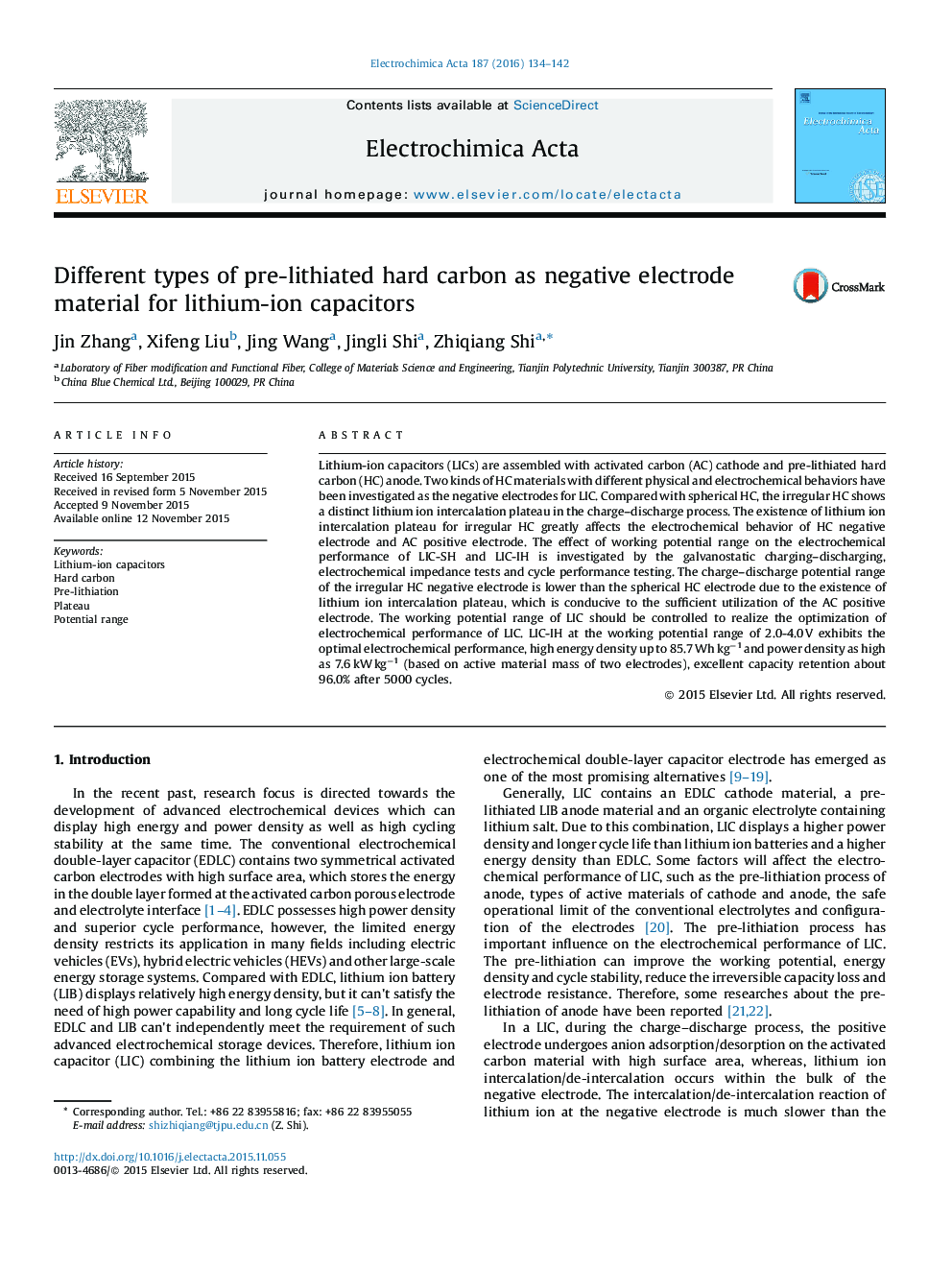| Article ID | Journal | Published Year | Pages | File Type |
|---|---|---|---|---|
| 183253 | Electrochimica Acta | 2016 | 9 Pages |
•Two types of HC materials with different properties as negative electrode.•Lithium ion intercalation plateau of HC affects electrochemical performance of LIC.•The electrochemical performance of LIC is operated at different potential ranges.•The selection of HC and appropriate potential range of LIC have been proposed.
ABSTRACTLithium-ion capacitors (LICs) are assembled with activated carbon (AC) cathode and pre-lithiated hard carbon (HC) anode. Two kinds of HC materials with different physical and electrochemical behaviors have been investigated as the negative electrodes for LIC. Compared with spherical HC, the irregular HC shows a distinct lithium ion intercalation plateau in the charge–discharge process. The existence of lithium ion intercalation plateau for irregular HC greatly affects the electrochemical behavior of HC negative electrode and AC positive electrode. The effect of working potential range on the electrochemical performance of LIC-SH and LIC-IH is investigated by the galvanostatic charging–discharging, electrochemical impedance tests and cycle performance testing. The charge–discharge potential range of the irregular HC negative electrode is lower than the spherical HC electrode due to the existence of lithium ion intercalation plateau, which is conducive to the sufficient utilization of the AC positive electrode. The working potential range of LIC should be controlled to realize the optimization of electrochemical performance of LIC. LIC-IH at the working potential range of 2.0-4.0 V exhibits the optimal electrochemical performance, high energy density up to 85.7 Wh kg−1 and power density as high as 7.6 kW kg−1 (based on active material mass of two electrodes), excellent capacity retention about 96.0% after 5000 cycles.
